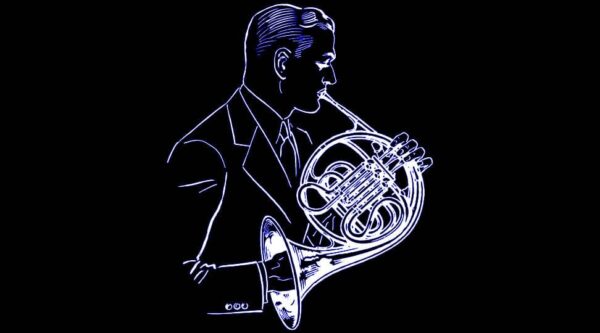Production sound design: Picture Lock, Dialogue, Sound Design, Composition, Mixing, and Mastering, and the team of film artists that executes them.
By Glen Berry, Edited by Stavros C. Stavrides
IMPORTANT CONCEPTS
- There is no substitute for good location sound
- Post Sound is a project unto itself
- Post Production Sound mixing is an art
The 6 Steps of Post-Production Sound
At this introductory level, we can’t go into every single detail of each formal step in a post-production workflow. However, it’s to get a grasp on the steps we would go through on a professional project. That way we can have a goal to shoot for as we strive to improve the quality of our projects.
The six steps in the Post Production Sound workflow could be described as the following:
- Picture Lock
- Mastering Dialogue
- Post-Production Sound Design
- Composition
- Mixing
- Mastering (sweetening)
Picture Lock
No work can begin on the soundtrack until the picture and dialogue have been completed, or locked, by the editor. Picture lock is a milestone when the director (or producer, as the case may be) formally signs off on the edit.
There should be no changes to the image after the picture lock. If changes are made to the picture, the sound designer and the composer will have to reset and retime their work, which is wasteful, frustrating and unprofessional.
If you work in post-production audio, always make sure that the movie’s picture that is delivered to you is “locked”. before you work on timing or cues. If the picture changes afterward, your tracks may have to change as well.
Mastering Dialogue
Although the location sound department will make every effort to capture a clean, strong dialogue track, many production environments are less than ideal.
Humming, pops, hisses, or other noise may have been introduced to the soundtrack and need to be cleaned through the use of filters or equalization. Also, two actors in the same scene rarely have the same delivery volume. Adjusting relative levels of dialogue may be necessary.
At this point, a determination can be made whether the audio is usable or not. Dialogue that is too low in quality or was not recorded in production can be recorded at this stage with ADR (Automatic Dialogue Replacement).
Sound Design
The post-production sound designer is tasked with determining the placement of music and effects, as well as finding or creating all the necessary sound effects. We will expand on this task further in Sound Design and Effects.
This article is drawn from the “Sound” chapter in Cyber Film School’s
Multi-Touch Filmmaking Textbook
Composition
The composer’s job is to create original music for the movie with guidance from the director. Depending on the production, the sound designer will coordinate the sound effects and music with the composer. Regardless, the composer can begin his or her work as soon as the picture is locked.
The composer must be able to get a strong emotional read on what is happening on screen and be able to deliver a score that enhances, emphasizes and adds to the emotion of the movie.
Although a composer typically works by himself or herself away from the rest of the post-production team, they will have a great deal of influence on the overall feel of the picture and the emotional impact on the audience. We will expand on composition further in Music and the Short Film.
Mixing
An art in itself, post-production sound mixing is a critical step in the post audio process, and one that requires great care and good taste.
Mixing involves setting the relative volume levels of all of the tracks, as well as fades (ramping volume down) and swells (ramping volume up). All sounds at the same volume will yield an annoying cacophony of noises competing for the attention of the audience’s ear.
The mixer is part of the story-telling process, this is not simply a technical position. Choices made by the mixer can change perspective and, in some cases, make the difference in whether or not a scene works.
Music or sound effects can play the part of a character in the scene and the volume level of that track can tell us where that character is located relative to the current camera angle. A misread by the mixer can result in a critical sound effect being lost in the background, which has the potential to confuse or mislead the audience.
Pay careful attention to the mix, this is the time when all of your soundtrack elements come together.
Mastering
This final step in the process is the ‘fine tuning’ that evens out and enriches all of the elements of our soundtrack.
Like mastering dialogue, mastering the entire soundtrack is about removing undesirable sounds, most commonly through equalization and other filters that are applied to improve the quality of existing elements. This process is also called “Sweetening”.
Like mixing, mastering is part technique and part art and requires a well-developed ear and perhaps more importantly, good taste.
Again, although we might not go through every step in this process remember that each is important and push yourself to go through each stage. Post Production audio is the step that often receives the most pressure and receives the least attention.
This is the stage that loses the most from time wasted in the early stages of the process and suffers the most from poor planning and inexperience. This is also part of the moviemaking process where it is the easiest to add enormous value to your project for very little money.
Schedule time here and engage good people at this stage and you will be repaid tenfold in quality. It is the most predictable and easily controllable way to make your movie better.
SUMMARY
- Post Production sound requires its own team of talented artists. Treat the process with respect and allot sufficient time and money to do it right.
- You cannot fix lousy production audio in post-production and the actor’s dialogue cannot be quickly or accurately produced in post. Get it right the first time and you will be set for a strong soundtrack.
- Mixing all of your audio together is an art in itself. If your engineer is not paying close attention to detail, essential information and carefully designed nuances can be lost.




